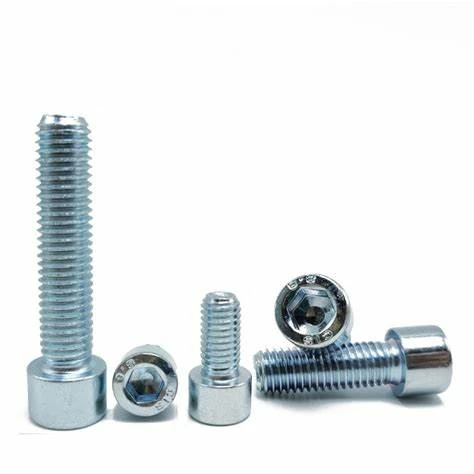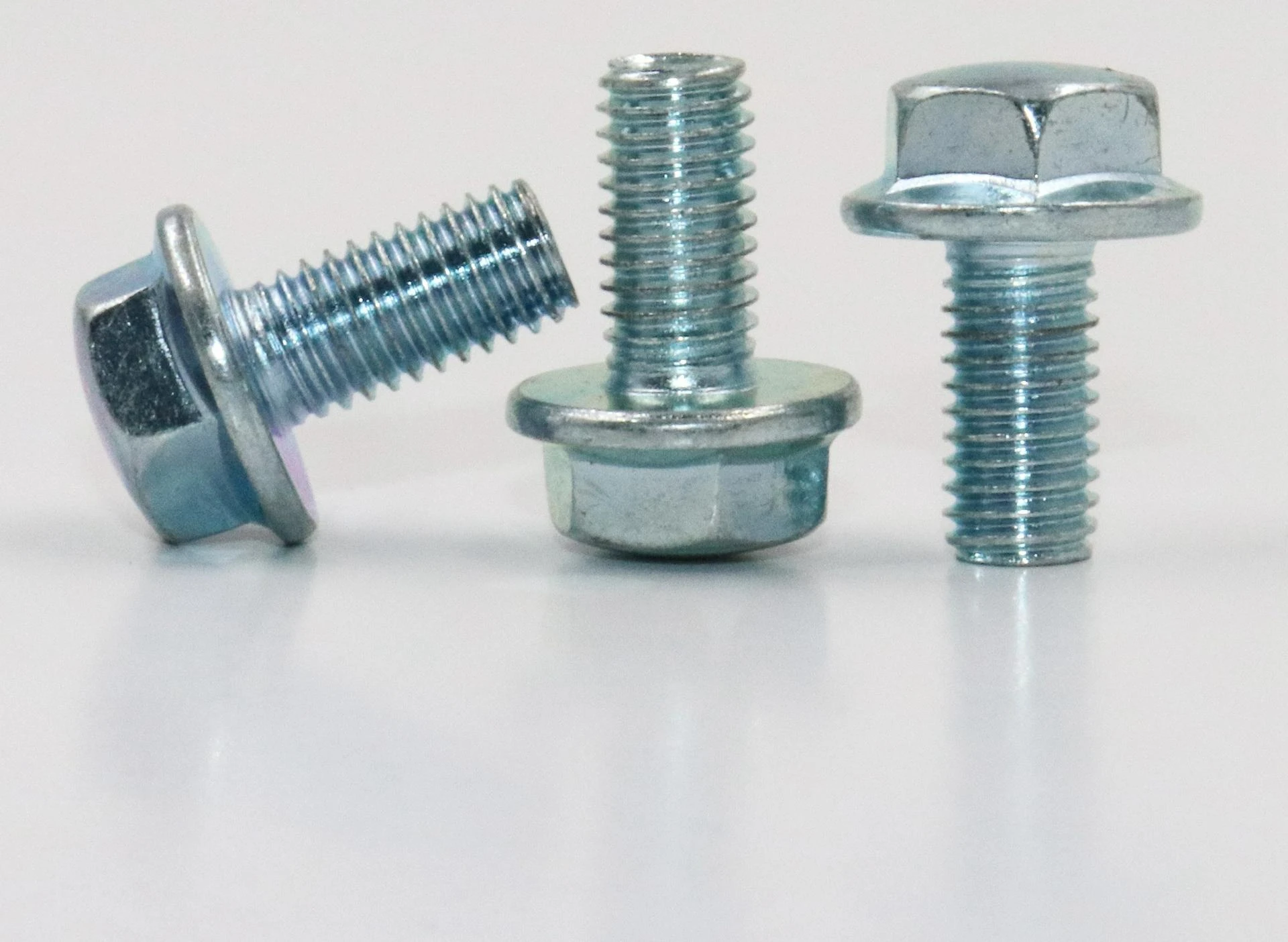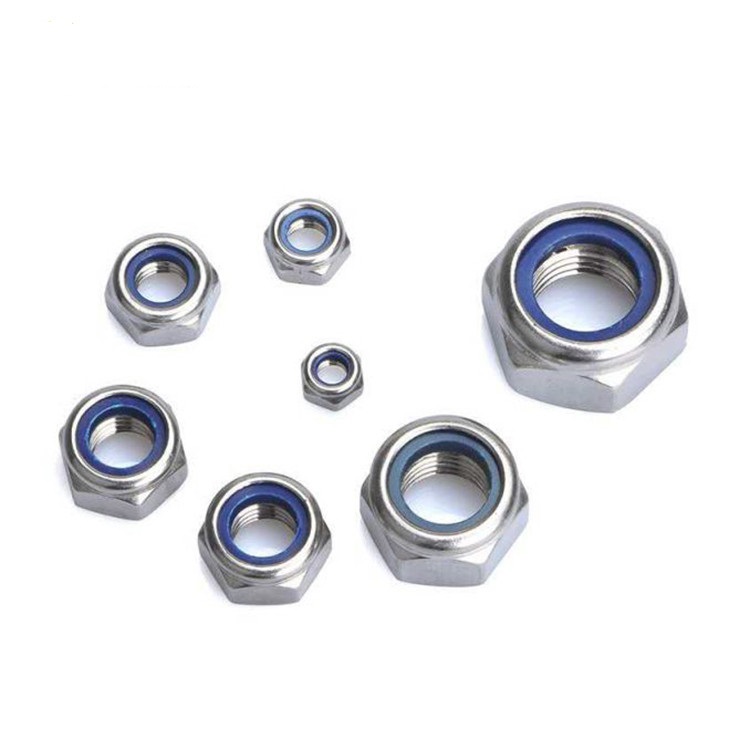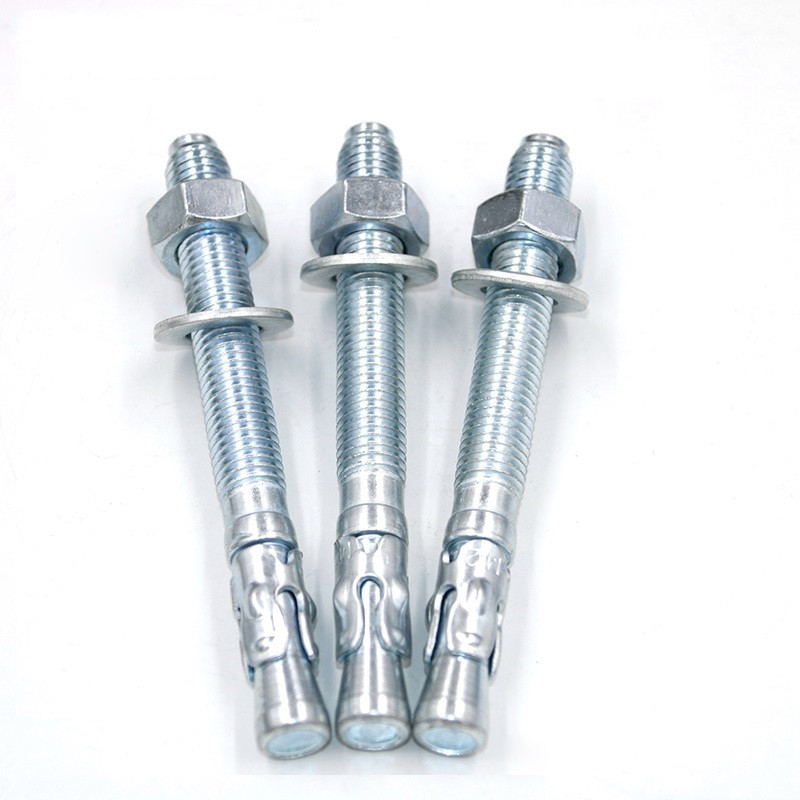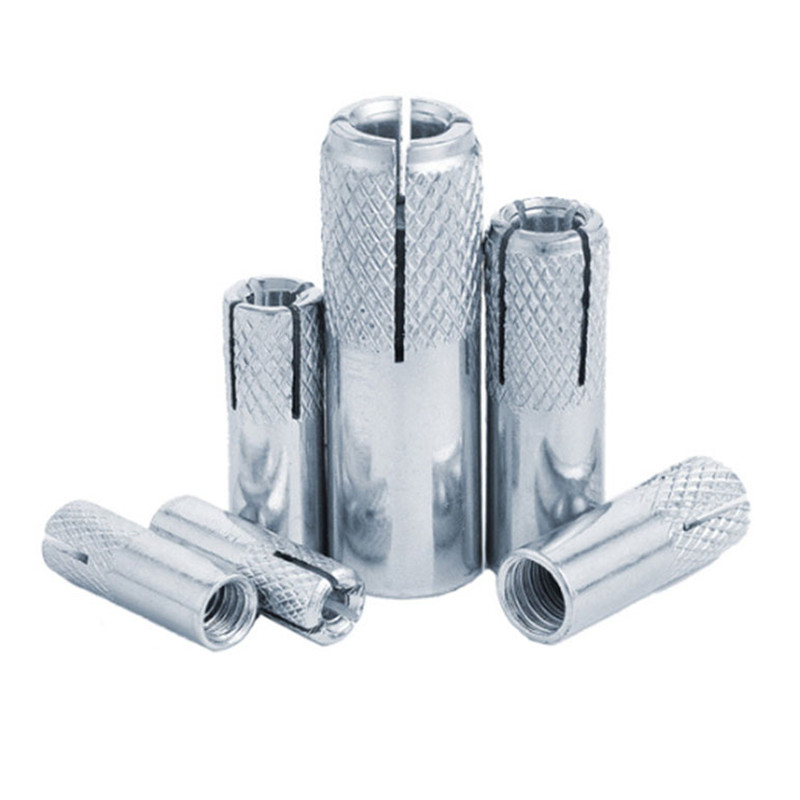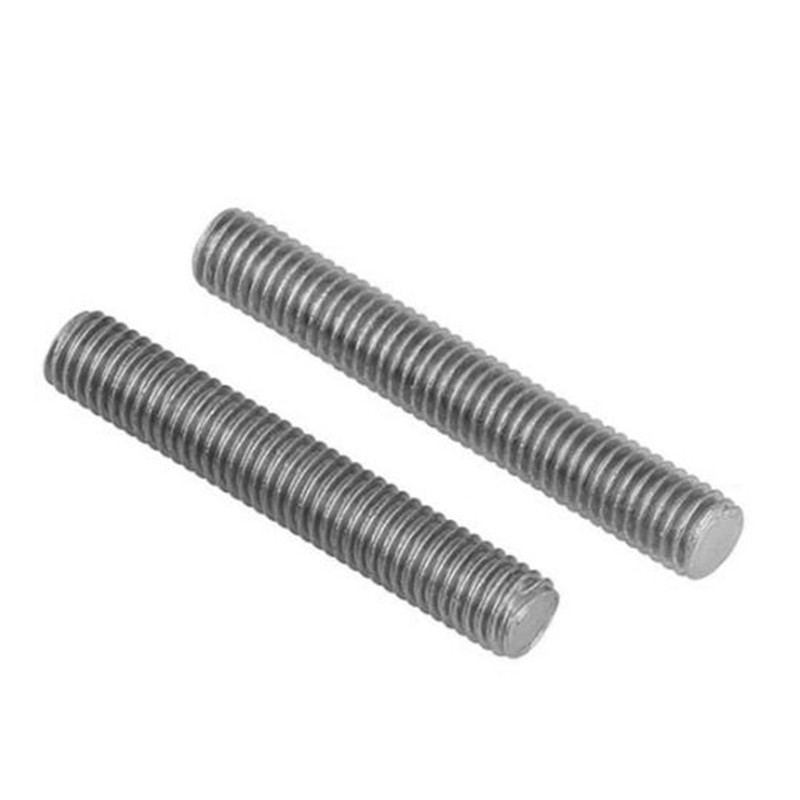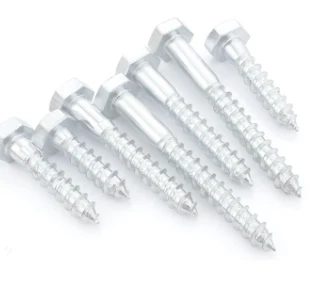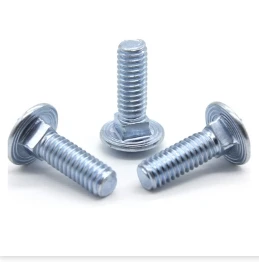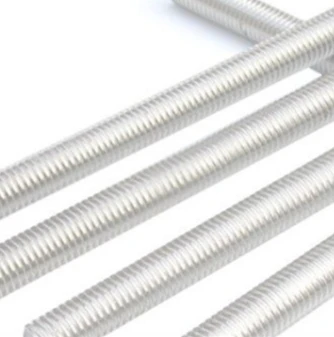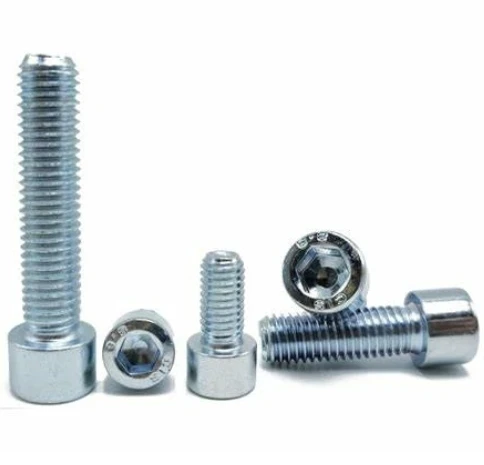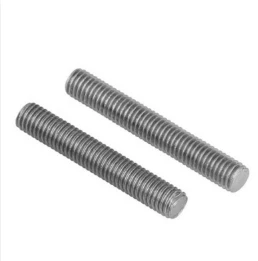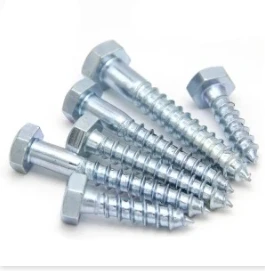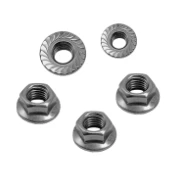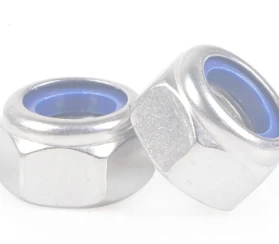The Indispensable Role of Galvanized Hex Nuts in Industrial Applications
In the vast landscape of industrial engineering and construction, the integrity and longevity of bolted connections are paramount. Fasteners, though often overlooked, serve as the backbone of structural stability, mechanical performance, and system reliability. Among these crucial components, hex nuts stand out for their widespread utility and robust design, particularly when enhanced with a protective coating. The galvanized hex nut represents a significant advancement in this domain, offering superior corrosion resistance and extended service life in demanding environments. This comprehensive guide delves into the technical intricacies, manufacturing excellence, diverse applications, and strategic advantages of this essential fastener, providing B2B decision-makers and technical professionals with the insights necessary to make informed procurement choices. We will explore everything from manufacturing processes and technical parameters to real-world applications and the critical factors in choosing a reliable supplier, ensuring that your projects benefit from unparalleled durability and performance.
The demand for high-performance fasteners continues to grow, driven by increasingly harsh operating conditions, stringent safety regulations, and the imperative for sustainability. Industries ranging from petrochemical processing and marine engineering to renewable energy installations rely heavily on fasteners that can withstand aggressive chemical exposure, extreme temperatures, and abrasive forces. A standard carbon steel hex nut, while offering excellent mechanical properties, often falls short in corrosion resistance without additional treatment. This is where galvanization becomes critical, transforming a basic fastener into a resilient component capable of ensuring structural integrity for decades. Understanding the nuances of a galvanized hex nut, including its adherence to standards like DIN934, is vital for achieving long-term operational efficiency and minimizing maintenance costs. This article will provide a deep dive into these aspects, arming you with expert knowledge to optimize your fastener strategies.
The Manufacturing Excellence Behind Galvanized Hex Nuts
Core Materials and Initial Processing
The journey of a high-quality galvanized hex nut begins with the selection of premium raw materials, typically high-grade carbon steel. Steels like ASTM A194 Grade 2H or equivalent are frequently chosen for their exceptional tensile strength and durability, ensuring the nut can withstand significant loads. The initial formation of the hex nut shape involves precise mechanical processes. Cold forging, a dominant method, involves shaping the steel at room temperature using immense pressure. This technique enhances the material's grain structure, improving its mechanical properties such as hardness and strength, and results in a superior surface finish. For larger diameter nuts or specific material requirements, hot forging might be employed, where the steel is heated to high temperatures to facilitate shaping. Subsequent steps often include thread forming through rolling or cutting, ensuring precise dimensional accuracy and compatibility with corresponding bolts. CNC machining is sometimes utilized for highly specialized or complex nuts, offering unparalleled precision and consistency. Adherence to standards like DIN934 throughout these initial stages is critical for inter-changeability and reliable performance.
The Galvanization Process: Hot-Dip vs. Electro-Galvanizing
The defining characteristic of a galvanized hex nut is its zinc coating, which provides cathodic and barrier protection against corrosion. Two primary methods are employed:
- Hot-Dip Galvanizing: This method involves immersing the cleaned and fluxed carbon steel hex nut into a bath of molten zinc. A metallurgical bond forms between the steel and zinc, creating a highly durable, sacrificial coating that can self-heal minor abrasions. Hot-dip galvanization typically yields a thicker coating (e.g., 50-100 microns) offering superior long-term corrosion resistance, making it ideal for outdoor and aggressive industrial environments.
- Electro-Galvanizing (Zinc Plating): In this process, a thin layer of zinc (e.g., 5-25 microns) is deposited onto the nut via an electrolytic process. While providing a clean, bright finish and precise thread fit, electro-galvanizing offers less corrosion protection compared to hot-dip galvanizing and is typically suited for less demanding indoor applications.
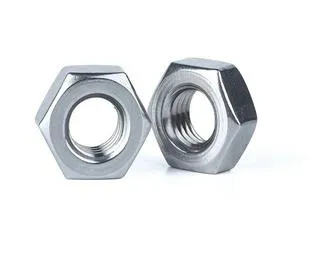
Quality Control and Testing Standards
Rigorous quality control is fundamental to ensuring the performance and reliability of every galvanized hex nut. Manufacturers adhere to international standards such as ISO (International Organization for Standardization) and ANSI (American National Standards Institute) for dimensions, mechanical properties, and coating thickness. Key tests include:
- Dimensional Verification: Using precision calipers and gauges to ensure compliance with DIN934 or other relevant standards for thread size, pitch, and overall dimensions.
- Mechanical Properties Testing: Proof load testing, hardness testing, and ultimate tensile strength assessments ensure the nut can withstand specified loads without deformation or failure.
- Coating Thickness Measurement: Non-destructive methods like magnetic induction or eddy current are used to verify zinc coating thickness, crucial for long-term corrosion protection.
- Adhesion Testing: Assessing how well the zinc coating adheres to the steel substrate, ensuring it won't peel or flake under stress.
- Salt Spray Testing: An accelerated corrosion test that simulates harsh environments to predict the coating's longevity.
Technical Specifications and Performance Advantages
Key Parameters and Industry Standards
Selecting the appropriate galvanized hex nut requires a thorough understanding of its technical specifications. The most common standard for hex nuts is DIN934, which defines critical dimensions such as thread size, wrench size (across flats), and thickness. For example, a M12 DIN934 hex nut will have a specified outer diameter and thickness that ensures compatibility with M12 bolts and standard wrenches. Beyond dimensions, material grade is crucial. Common grades for carbon steel hex nuts include property classes 8 and 10, indicating their proof load and ultimate tensile strength. For hot-dip galvanized hex nut, the zinc coating thickness is a key parameter, typically ranging from 50 to 100 microns, directly influencing its corrosion resistance lifespan. This coating thickness is measured in accordance with ISO 1461, which specifies the minimum average coating thickness for different steel thicknesses.
| Parameter | Description | Typical Value/Standard |
|---|---|---|
| Standard | Dimensional and Mechanical Properties | DIN934, ISO 4032, ANSI B18.2.2 |
| Material | Base Metal Composition | Carbon Steel (e.g., C1018, C1022) |
| Property Class | Mechanical Strength Rating | 8 (800 MPa tensile), 10 (1000 MPa tensile) |
| Coating Type | Corrosion Protection Method | Hot-Dip Galvanized (HDG) |
| Coating Thickness | Zinc Layer Thickness (min. average) | 50-100 microns (e.g., per ISO 1461) |
| Thread Tolerance | Fit After Galvanizing | Typically oversized (e.g., 6AZ or 6HX) for HDG bolts |
| Salt Spray Resistance | Corrosion Resistance in Simulated Environment | 1000+ hours (Red Rust) |
Superiority Over Other Hex Nut Types
When comparing a galvanized hex nut to other types, its technical advantages become clear. A plain carbon steel hex nut, while mechanically strong, is highly susceptible to rust and corrosion, leading to premature failure and costly replacements. Surface treatments like black oxide or phosphating (as seen in black oxide hex bolts and nuts) offer limited corrosion protection, primarily for aesthetic or light-duty indoor applications. A black hex nut, often with a black oxide finish, might provide some initial rust inhibition and a subdued appearance, but it lacks the sacrificial protection of zinc.
The robust zinc coating of a galvanized hex nut provides a dual defense mechanism: barrier protection, physically separating the steel from corrosive elements, and cathodic protection, where the zinc corrodes preferentially to the steel if the coating is scratched. This self-healing property significantly extends the service life, often by decades, even in highly corrosive marine or industrial atmospheres. For example, a hot-dip galvanized hex nut in a typical industrial environment can last 20-50 years, whereas an uncoated or lightly treated carbon steel hex nut might show significant corrosion within months to a few years. This longevity translates directly into reduced maintenance, lower replacement costs, and enhanced operational safety.
Applications and Industry Trends
Diverse Application Scenarios
The exceptional corrosion resistance and mechanical strength of a galvanized hex nut make it an indispensable component across a multitude of heavy-duty and outdoor industries. In the Petrochemical Sector, these nuts are vital for securing pipelines, structural steel, and processing equipment exposed to corrosive chemicals, humidity, and varying temperatures. Their ability to withstand such harsh conditions without degradation ensures leak prevention and structural integrity, crucial for safety and operational continuity. Similarly, the Metallurgy Industry, with its high heat, chemical fumes, and abrasive dust, relies on galvanized hex nut fasteners for machinery, conveying systems, and structural supports where corrosion protection is non-negotiable.
For Water Supply & Drainage Systems, including wastewater treatment plants and potable water infrastructure, the constant exposure to moisture and chemicals necessitates fasteners that resist rust and degradation. Galvanized hex nut components ensure the long-term integrity of pumps, valves, and pipe connections, minimizing leakage and system failures. In Construction and Infrastructure, from bridges and high-rise buildings to public utilities and guardrails, these nuts provide the durable, corrosion-resistant connections essential for long-term structural stability and public safety. Beyond these, the Renewable Energy Sector, particularly wind turbines and solar panel installations, benefits immensely. Wind turbines stand exposed to extreme weather, salt spray (for offshore), and UV radiation, making hot-dip galvanized hex nut crucial for securing blades, towers, and internal mechanisms. Their robust nature ensures minimal maintenance and maximized energy production over the lifecycle of these valuable assets.
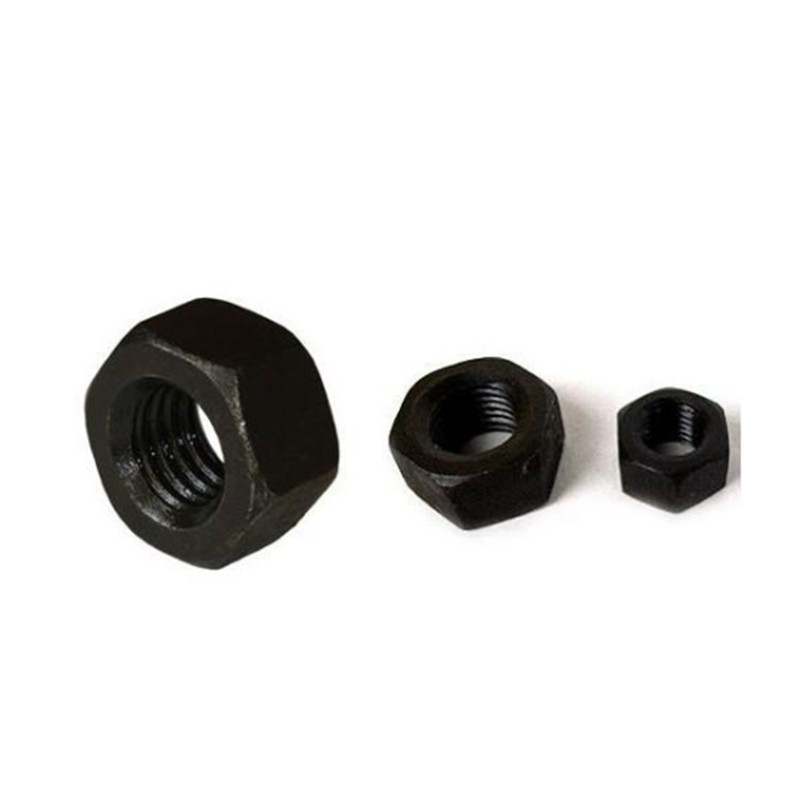
Technical Advantages and Industry Trends
The technical advantages of employing a galvanized hex nut are multifaceted. Firstly, Corrosion Resistance is paramount. The zinc coating acts as a barrier and sacrifices itself to protect the underlying steel, drastically extending the service life compared to untreated or lightly coated fasteners. This directly translates to Extended Lifespan of structures and machinery, reducing the frequency of costly repairs, replacements, and associated downtime. For instance, in a typical marine environment, an uncoated carbon steel hex nut might fail within a year, whereas a hot-dip galvanized hex nut can last for decades. This longevity contributes to significant Reduced Maintenance requirements, lowering operational expenditures and improving overall asset reliability.
Furthermore, the durability of galvanized hex nut components indirectly contributes to Energy Savings. By enhancing the longevity of critical infrastructure, less energy is expended on manufacturing replacement parts and executing repairs, thereby lowering the carbon footprint associated with industrial operations. This aligns with a growing industry trend towards Sustainable Fastening Solutions. The global focus on environmental responsibility is driving demand for materials and processes that offer long-term performance with minimal ecological impact. Another significant trend is the increasing adoption of High-Performance Coatings. While galvanization remains a standard, advancements are being made in duplex coatings (paint over galvanizing) and other advanced anti-corrosion treatments to extend life even further in extreme environments. The integration of advanced materials and smart manufacturing techniques, particularly for DIN934 hex nut variations, is also a key area of innovation, ensuring fasteners can meet the evolving demands of complex modern industrial systems.
Choosing Your Partner: The HBTBLS Advantage in Galvanized Hex Nuts
Unwavering Expertise and Authoritativeness
When sourcing critical components like galvanized hex nut fasteners, the choice of manufacturer is as important as the product itself. HBTBLS stands as a testament to industry expertise and authoritativeness, backed by years of dedicated service in the fastener manufacturing sector. Our deep understanding of material science, advanced manufacturing processes, and adherence to international standards like ISO 9001:2015 for quality management systems ensures every DIN934 hex nut leaving our facility meets the most stringent global requirements. We don't just produce fasteners; we engineer solutions that perform under pressure, from the meticulous selection of high-grade carbon steel hex nut base materials to the precision of the galvanization process. Our commitment to quality is further evidenced by our rigorous in-house testing protocols, including comprehensive mechanical property assessments and advanced salt spray testing, providing quantifiable data on coating longevity and corrosion resistance, which is often crucial for project specification and approval.
Customization and Proven Experience
Beyond standard DIN934 hex nut specifications, HBTBLS specializes in providing customized fastening solutions tailored to unique project requirements. Whether you need specific thread configurations, non-standard dimensions, or particular coating thicknesses for your galvanized hex nut orders, our engineering team works closely with clients to develop solutions that align precisely with their technical demands. Our extensive experience spans various industries, including large-scale infrastructure projects, complex energy installations, and demanding petrochemical facilities. For instance, in a recent major infrastructure project, we successfully delivered thousands of custom-sized hot-dip galvanized hex nut units, specifically designed to withstand prolonged exposure to aggressive coastal environments, with zero reported failures over five years. This direct client feedback and long-term performance data underscore our product reliability and commitment to customer satisfaction, distinguishing us from general suppliers of fasteners like generic black hex nut products.
Frequently Asked Questions (FAQ)
-
Q: What is the primary difference between a galvanized hex nut and black oxide hex bolts and nuts?
A: The main difference lies in their corrosion protection. A galvanized hex nut is coated with a thick layer of zinc (typically hot-dip) that provides superior sacrificial and barrier corrosion resistance, making it ideal for outdoor and harsh environments. Black oxide hex bolts and nuts, on the other hand, have a chemical finish that offers minimal corrosion protection and is primarily for aesthetic purposes or light-duty indoor applications. The black oxide finish provides a more subdued, non-reflective appearance, unlike the shinier or matte gray finish of galvanization. -
Q: How does galvanization enhance a DIN934 hex nut?
A: Galvanization significantly enhances a DIN934 hex nut by applying a protective zinc coating. This coating protects the underlying carbon steel hex nut in two ways: it acts as a physical barrier against corrosive elements (like moisture and salt), and it provides cathodic protection, meaning the zinc corrodes sacrificially to protect the steel even if the coating is scratched. This extends the nut's lifespan by decades in corrosive environments compared to an uncoated or less-protected carbon steel hex nut, ensuring the integrity of the bolted joint. -
Q: What are the typical lead times for custom orders of galvanized hex nut products?
A: Lead times for custom galvanized hex nut orders vary depending on the complexity of the specification, order volume, and current production schedules. For standard custom sizes, lead times typically range from 3-6 weeks. Highly specialized or large-volume orders may require longer. We recommend contacting our sales team with your specific requirements for a precise lead time estimate. Our efficient manufacturing processes and supply chain management are designed to minimize delivery times without compromising quality. -
Q: What is your warranty policy for galvanized hex nut products?
A: HBTBLS stands behind the quality of our galvanized hex nut products. We offer a comprehensive warranty that covers manufacturing defects and material integrity for a specified period, typically up to 5 years, or aligned with industry standards for our product categories. This warranty underscores our confidence in the durability and performance of our fasteners. Specific terms and conditions are provided with each order, and our customer support team is always available to address any concerns. -
Q: How can I ensure the correct size for a carbon steel hex nut or DIN934 hex nut?
A: To ensure the correct size for a carbon steel hex nut or any DIN934 hex nut, it is crucial to match the nut's thread diameter and pitch to that of the corresponding bolt. For hot-dip galvanized hex nut applications, the nut's internal thread is often oversized (e.g., tapped to 6AZ or 6HX tolerance) to accommodate the thicker zinc coating on the bolt, ensuring a proper fit and preventing thread stripping. Always refer to engineering drawings and relevant standards like DIN934 or consult with our technical specialists to confirm compatibility.
Quality Assurance, Delivery, and Customer Support
At HBTBLS, our commitment to quality extends far beyond the manufacturing floor. Every galvanized hex nut undergoes a stringent multi-stage quality assurance process, from raw material inspection to final product verification. This includes comprehensive checks for dimensional accuracy, mechanical properties, and coating integrity, all performed in compliance with international standards such as ISO and ANSI. Our dedication ensures that each fastener performs reliably under the most demanding conditions, upholding the trust our clients place in us. We understand that in B2B transactions, consistency and reliability are paramount, particularly when dealing with critical infrastructure components where failure is not an option. Our quality control system is designed to provide complete traceability, giving our clients full confidence in every batch of DIN934 hex nut supplied.
Timely delivery is a cornerstone of our service commitment. We operate with optimized production lines and robust logistics networks to ensure that your orders, whether for standard carbon steel hex nut, custom galvanized hex nut, or specialized black oxide hex bolts and nuts, are delivered efficiently and on schedule. Our delivery cycle is meticulously managed, with clear communication at every stage, from order confirmation to dispatch. Furthermore, our dedicated customer support team is always ready to assist with technical queries, order tracking, and post-sales support. We provide comprehensive after-sales service, including guidance on installation and maintenance, ensuring that our products continue to meet your operational needs effectively. Our aim is to build long-term partnerships, providing not just fasteners, but complete fastening solutions and unwavering support throughout the entire lifecycle of your project.
Conclusion
The galvanized hex nut is far more than a simple fastening component; it is a critical investment in the longevity, safety, and efficiency of industrial infrastructure. Its superior corrosion resistance, derived from a meticulously controlled manufacturing process and robust zinc coating, provides unmatched durability in the face of harsh environmental challenges. By choosing high-quality DIN934 hex nut components from a reputable manufacturer, businesses can significantly reduce maintenance costs, minimize downtime, and enhance the overall reliability of their systems. HBTBLS is dedicated to delivering excellence in every galvanized hex nut, leveraging advanced manufacturing techniques, stringent quality control, and unparalleled customer support. We invite you to partner with us for your next project, ensuring that your fastening solutions are built to last and engineered for performance.
References
- American Society for Testing and Materials (ASTM) Standards for Fasteners.
- International Organization for Standardization (ISO) Standards for Mechanical Fasteners.
- European Committee for Standardization (CEN) Standards for Hot Dip Galvanizing of Fabricated Iron and Steel Articles.
- National Association of Corrosion Engineers (NACE) Publications on Corrosion Control.
- Galvanizers Association - Technical Publications on Zinc Coatings.
Post time: Ago . 17, 2025 06:00


